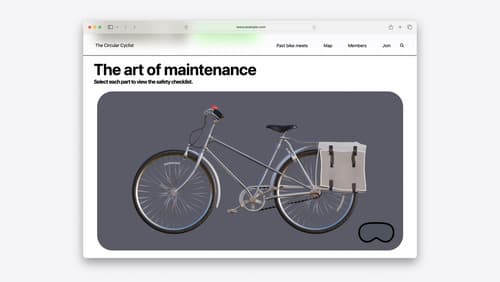can I use realitykit without the camera? just to display 3d objects in an app
Asked on 2025-04-27
1 search
Yes, you can use RealityKit without the camera to display 3D objects in an app. RealityKit is a framework that provides high-performance 3D simulation and rendering capabilities for apps on iOS, iPadOS, macOS, and visionOS. It allows you to create immersive spatial computing apps and games, and you can use it to render 3D content without necessarily using the camera for augmented reality experiences. This means you can build applications that display 3D objects in a virtual environment or on a static background without requiring camera input.

Optimize your 3D assets for spatial computing
Dive into an end-to-end workflow for optimized 3D asset creation. Discover best practices for optimizing meshes, materials, and textures in your digital content creation tool. Learn how to harness shader graph, baking, and material instances to enhance your 3D scene while optimizing performance. Take advantage of native tools to work more effectively with your assets and improve your app’s performance.

Platforms State of the Union
Discover the newest advancements on Apple platforms.

Optimize for the spatial web
Discover how to make the most of visionOS capabilities on the web. Explore recent updates like improvements to selection highlighting, and the ability to present spatial photos and panorama images in fullscreen. Learn to take advantage of existing web standards for dictation and text-to-speech with WebSpeech, spatial soundscapes with WebAudio, and immersive experiences with WebXR.
